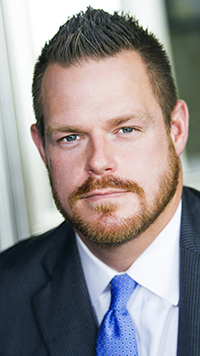Alex Murdaugh and whether to testify in your own defense
As a criminal defense attorney with my fair share of trial experience, it’s always interesting to see how other practitioners litigate their cases. After all, the legal profession enjoys playing Monday morning quarterback with its analysis. I personally try not to cast stones; I’m far from flawless in trial. But that’s the beauty of the process: No one is perfect in that setting.
A seasoned attorney described it best to me when I was a pup. He expressed, among other things, that if you give the same case to 10 different lawyers, you’ll see it tried 10 different ways. And that isn’t a slight to any other advocate; in fact, it’s an ode to the artistry implicit in advocacy.
Representing attorneys
There is one subset of trial practice that really brings the bright lights, though. When you have an attorney facing charges in a criminal case, there’s a different level of scrutiny, not only from the internal perspective but also from an outside analysis.
Those of us who have represented attorneys through criminal prosecution can attest that when it comes to representing someone licensed and knowledgeable about the law, there will be plenty of bumps in the road on the path to a productive attorney-client relationship. It’s hard enough to represent an untrained individual through a process aimed at depriving them of life and liberty—there’s constant second-guessing, whether explicit or implicit, when the stakes are that high. It’s even more challenging to navigate those waters when the backseat driver is also a knowledgeable professional.
Without knowing the inner dealings, I can assume this was the case during South Carolina attorney Alex Murdaugh’s criminal trial. After all, we need only look at the Murdaugh saga as a whole, which “involved embezzlement, drug trafficking, money laundering, a faked murder attempt, a failed assisted suicide and the deaths of three other individuals.”
Call me crazy, but that sounds like a complicated situation that was likely exacerbated by a potentially complex attorney-client relationship.
The case against Murdaugh was almost entirely based on circumstantial evidence. Although the law makes no distinction between direct and circumstantial evidence for the purposes of trial, desperate individuals will keep a death grip on hope in the absence of red hands. That may have played a part in Murdaugh’s decision to pursue a trial, but there likely wasn’t much middle ground to run to, either. The prosecution believed he killed his wife and son in cold blood; Murdaugh maintained he didn’t kill them in any way, shape or form.
Nevertheless, he ultimately was convicted of both murders and handed two consecutive life sentences.
Parents who kill their kids
As a parent, I can’t fathom a situation in which I would deliberately and intentionally take my child’s life. I’ve been watching HBO’s The Last of Us (I love zombie movies), and certain scenes force the audience to imagine facing a “loved one” who has turned into a zombie. I’ve had fleeting thoughts of how I would react if my son became a zombie before I did. To be honest with you, I think I’d probably let him kill me. I just can’t imagine hurting him under any circumstances, even if that causes a detriment to my personal health or safety.
Nevertheless, situations in which parents kill their children—known as filicide—happen much more often than we’d like to believe. In 2017, CNN reported that according to a Forensic Science International study, between 1976 and 2007, approximately 500 children were killed by their parents yearly. That number is staggering in light of our innate parental instincts. The figure makes one wonder if those parents are simply out of their minds or if there is some other issue at play leading to such a horrible result.
According to the self-described “only person in America who is a forensic psychiatrist, a reproductive psychiatrist and an academic whose research has focused on filicide for two decades … there are multiple different reasons why parents kill their children, and mental illness may—or may not—have a role in individual cases.” That person is Susan Hatters Friedman, and she explains how “it’s critical that we never presume why a parent killed.” She further notes that “anger, greed, hatred and revenge” are often seen in various family-related murders.
While Friedman advises not to presume why a person killed, we often jump to the most palatable conclusion, as I did earlier in this column—that someone must be mentally ill or unstable to perpetrate such a deplorable act.
The decision to testify
And maybe that’s why Murdaugh decided to take the stand in his own defense; perhaps he and his defense team wanted to show that he’s not the type of insane killer so many of us imagine when we think of someone capable of taking the life of their own child. Or maybe, as an attorney-defendant, he made the decision to testify on his own against the wishes of counsel.
Regardless of the reason behind the decision, advising your client to testify or refrain from the same is one of trial practice’s most challenging strategic aspects. It’s often a tough decision for the client as well. Ultimately, it’s their Fifth Amendment right to exercise or waive.
Aside from any mental health-related strategy, Murdaugh found himself caught between a rock and a hard place, nonetheless. During three separate interviews, he denied being present at the kennels where his wife and son were shot. That persistent point was called into question when a video found on a friend’s phone placed Murdaugh at the kennels during the time his wife and son died.
So with that in mind, I can see the logic behind taking the stand. When your client gets caught in a lie, they have two options: 1) admit defeat and hope the jury doesn’t hold it against you; or 2) go down swinging. My general approach is that if the damage is already done and there isn’t any impeachment evidence that could make the damage even more catastrophic, then take the puncher’s chance.
Be that as it may, Murdaugh’s situation is just one particular example of a much broader philosophical question: Should your client testify at jury trial?
Well, the answer is a classic lawyer cliché: It depends. The ultimate decision comes down to a simple analysis. What do you stand to gain versus what do you stand to lose? Criminal defense attorneys spend a large majority of jury selection reiterating the fact that we don’t have anything to prove; the burden is high, and it rests solely on the prosecution. As such, you can sometimes appear disingenuous if you present too much evidence without the proper preface.
I like to inform juries from the outset that I don’t know what evidence I might have to present because that decision depends on what the prosecution does or doesn’t show. I may have to fill in some gaps. I may have to correct some errors or omissions. That explanation at least leaves the door open.
Many factors play a part in the advice you give. Does your client have prior convictions or other trouble? Are there aspects of the story only your client can tell? What’s their temperament? Do they appear sincere and honest? Will they actually listen to your questions and answer them without going into left field?
At the end of the day, I do believe juries want to see someone get on the stand and say, “I didn’t do it.”
But at what cost?
See also:
ABAJournal.com: “In murder trial cross-examination, prosecutors focus on ex-lawyer Murdaugh’s financial misdeeds and his ‘new story’”
ABAJournal.com: “Once-prominent lawyer Murdaugh gets life in prison for murders of wife and son”
ABAJournal.com: “Prosecutors in murder trial of ex-lawyer Murdaugh can introduce evidence of alleged financial crimes, judge rules”
Adam Banner
Adam R. Banner is the founder and lead attorney of the Oklahoma Legal Group, a criminal defense law firm in Oklahoma City. His practice focuses solely on state and federal criminal defense. He represents the accused against allegations of sex crimes, violent crimes, drug crimes and white-collar crimes.
The study of law isn’t for everyone, yet its practice and procedure seems to permeate pop culture at an increasing rate. This column is about the intersection of law and pop culture in an attempt to separate the real from the ridiculous.
This column reflects the opinions of the author and not necessarily the views of the ABA Journal—or the American Bar Association.






